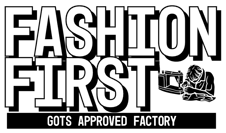

Sustainability
We believe in sustainable bright future, with our continuous rapid transformations sustainability remains as core of our business. And working towards more sustainable future; As a fast responsive manufacturer we ahead with future beyond thinking and continuous improvement in environment management system all the time. Our operations focus on reducing the environment impact and reducing the foot print in every aspect/process.
Our Sustainability Objectives
- Reducing the environment impact.
- Reducing the foot print.
- Optimisation of natural resource utilisation.
- Reduce/Optimise, Reuse & Recycle.
- Being Ethical.
- Continuous Improvement.

100% RECYCLED
The best solution is recycling. Recent developments make it possible to produce comfortable fabrics with up to 60% recycled cotton. In order to reach a sufficient yarn strength the recycled cotton needs to be mixed with polyester but recycled PET is added in order to make the product 100% recycled. The offer in 100% recycled products from stock is still in the starting blocks. But nevertheless there are some valuable options. For those who have the possibility to opt for made to order production, we can make almost any classical cotton products in a 100 % recycled version.

ALTERNATIVE FIBERS
Natural Artificial Fibers
Also used in the garment industry are natural artificial fibers, meaning that the fibers are made by men out of cellulose from trees or plants. From a basic pulp new threads are generated and woven into textiles. Because they are man-made those fibers are often softer and have good qualities for clothing. Tencel, Modal and Bamboo are the artificial fibers used for some of our products.
TENCEL
Tencel is the most known and is in fact a brand name developed by Lenzing for the fiber called Lyocell. The eucalyptus trees which are the base material for this fiber are cultivated with minimal environmental impact. That is why Tencel received the European Ecolabel. Moreover, the fiber is produced via an advanced ‘closed loop’ solvent spinning process, with minimal impact on the environment and economical use of energy and water. Lyocell uses an amine oxide as a non-toxic solvent which is continually recycled during the production process.


MODAL
Modal is a fiber made by spinning cellulose, often from beech trees. These trees are grown in a sustainable way. The production of the fibers however require a lot of energy and chemicals. Lenzing, also producing Modal (next to Tencel), is trying to limit the damages, but Tencel is a better product in this context. Modal is used alone or with other fibers, often cotton.
BAMBOO
Bamboo is a resistant plant that grows very fast (up to 1 meter a day) without pesticides, fertilizers or other chemical products. With several crops a year, Bamboo generates more oxygen than other plants and limitates the erosion of soils.
So growing bamboo is a wonderfully beneficial plant for the planet and most is naturally organic bamboo. Unfortunately bamboo, the fabric, isn’t easy to categorize because the manufacturing processes to obtain the fabric from the plant uses a lot of chemicals, some of which are toxic for the workers and the environment. Although some manufacturers boast that they have implemented ISO certificates, it is impossible to know if their processes are actually sustainable and conform to environmental regulations. Also, environmental regulations, controls and enforcement vary greatly from country to country as does transparency into what really happens within a country’s manufacturing facilities. For those reasons INK categorizes Bamboo as ‘Green’.


LINEN
Another natural fiber that can be used to make clothes is linen. Linen is used by the big stylists for its exceptional properties of freshness and comfort. Produced without any waste, using less energy and water, linen (the flax plant) does no harm to nature whatsoever. It is the most sustainable material and is 100% biodegradable.
HEMP
Hemp, like bamboo is considered a sustainable crop. It requires no pesticides and needs little water, yet it renews the soil with each growth cycle. It’s long roots prevent erosion and help retain topsoil. Unlike cotton, many parts of the hemp plant have a use: hemp seeds, for example, are processed into oil or food. Clothing made of hemp fiber is lightweight, absorbant and, with three times the tensile strength of cotton, strong and long lasting. Moreover hemp can be blended with other fibers for different qualities in the garment.

ORGANIC COTTON
Organic farmers use biologically-based rather than chemically dependent growing systems. While many conventional farmers are reacting to the ecological disorder created by monocultures, organic farmers focus on preventing problems before they occur. By focusing on managing rather than completely eliminating troublesome weeds and insects, organic farmers are able to maintain an ecological balance and protect the environment. Certified organic cotton growth assures that no chemical pesticides, no chemical fertilizers and no GMO’s are used. It also guarantees a more efficient water use, less green house gases and crop rotation to preserve the land. Crop rotation of cotton with food crops also assures farmers of a more diverse income and food security in their local communities. A byproduct of organic cotton growth is that it allows third world farmers to escape the trap set up by the big agrochemical multinationals who tie up farmers by cheap financing of seeds combined with obligatory use of expensive chemical fertilisers.

